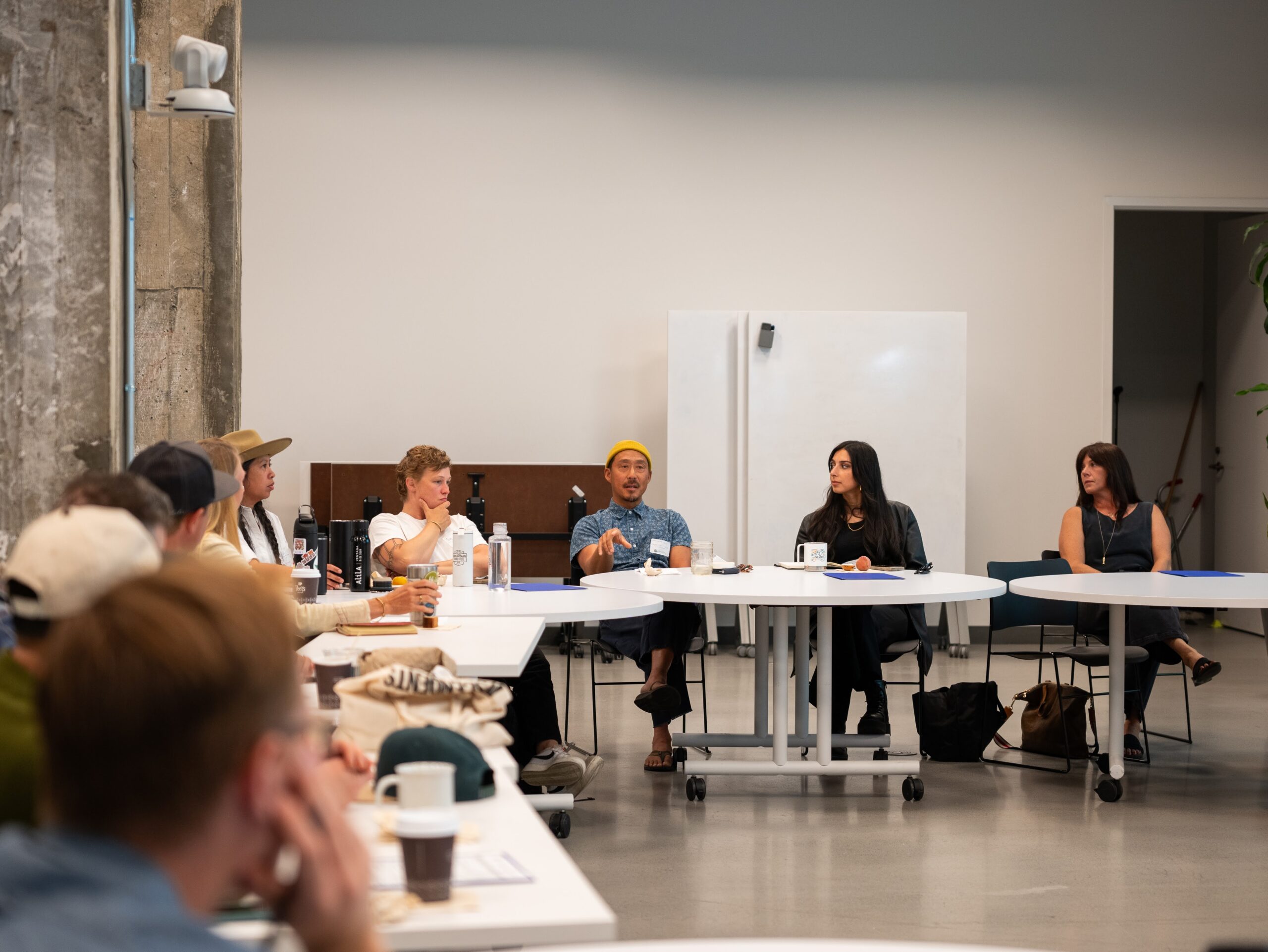Relationships are the bedrock of local seafood systems. Fisherfolk work directly with and for their communities, getting to know their customers, be they chefs or customers at farmer’s markets.
These relationships are built on trust. This was a focal point of the Slow Fish Chefs Camp in Oakland on August 6th. Co-produced by Slow Fish North America, Slow Food USA, Slow Food East Bay, and One Fish Foundation, the event brought nearly 20 chefs from across the Bay Area representing different cuisines and cultures together with local fishermen and sustainable seafood advocates to discuss challenges and successes in building local seafood systems.
The theme of relationships and local seafood showed up in Christopher Wang’s story about launching Gypsy Fish Company as a way to bring the magic of Bristol Bay, AK, to his home community in and around Santa Cruz, CA. A chef and commercial fisherman, he spends nearly two months every summer on a drift net boat in Bristol Bay, harvesting sockeye salmon from the world’s largest wild sockeye run. He provides this incredible bounty via direct customer deliveries as well as customer drop-off sites throughout the region.
Forging friendships with his customers so they know his story and the story of the wild sockeye salmon he sells them is important to him as well as the sustainability of Gypsy Fish Company.
That narrative resonated with chefs who spoke about wanting to connect more deeply with their communities in part by sourcing sustainable seafood. We talked about some of the challenges they face, including customer education, supply chain visibility, and learning more about what seafood is locally available when. More importantly, they want to know who is providing it and how to get it.
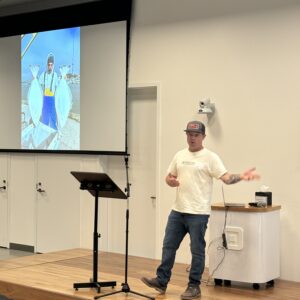
Kenny Belov of Two X Sea talks about direct sourcing from small-boat fishermen in the Bay Area. Photo: Colles Stowell
Telling the seafood story
As seafood distributor and chef Kenny Belov said, “Seafood without a story is flavorless. Those individuals that catch our seafood are the flavor.”
He started Two X Sea in San Francisco to provide direct-sourced seafood to restaurants (including his own restaurant, Fish, in Sausalito) and to communities after he discovered some of the seafood he’d been sourcing was not coming from the sustainable, small-scale fishery he thought it was.
“My mission is to tell the truth. The only way to change [the situation] was to become it.” So he went to Juneau, AK., met the fishermen, and started to ship wild harvested salmon with a great story down to the Bay Area. “Customers love seeing the captains’ names.” They love hearing the story.
We discussed how the story of the seafood and transferable trust are key elements that strengthen the value chain from producer to consumer. For example, Kenny sources Gulf of Mexico shrimp from Lance Nacio of Anna Marie Seafood in La. because he knows how Lance harvests and processes the shrimp (plate frozen at sea, no tripolyphosphates or other chemicals added, superior quality). So when Kenny sells that shrimp to a chef and that chef puts the shrimp in a paella on the menu, Kenny’s trust in Lance transfers to the chef and ultimately to the consumer, especially when the chef tells the story of how the shrimp got into the paella.
The definition of local has evolved from a sole focus on geography to encompass that relationship built on trust and honesty that Kenny has in Lance.
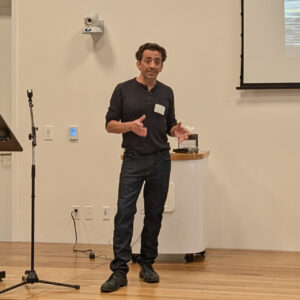
Chef Matthew Dolan of 25Lusk in San Francisco shares lessons learned sourcing sustainable seafood at a mid-size restaurant. Photo: Sophia Cheng, Slow Food East Bay
Chef Matthew Dolan of 25 Lusk in San Francisco (which co-hosted the Slow Fish KNOW FISH Dinner in May with Slow Food East Bay, and where Kenny Belov also spoke) echoed the theme of truth in sourcing. “Honesty always wins,” he said.
That doesn’t mean sustainable sourcing is easy. One of the challenges frequently cropping up in Chefs Camps discussions is balancing the higher costs of sustainable sourcing with the business model. It takes some creativity and hard work, according to Dolan.
He talked about the transformation from working at a small, high-end restaurant in Finland where the fishmonger would stop by with a limited selection of locally caught fish. There were no other options. He contrasted that hyper-local sourcing with the online accessibility of any fish you want at almost any time due to a very complex global seafood supply chain that prioritizes profit over values.
“I’m value engineering the solution, focusing on only sustainable products regardless of price,” he said. “I’m coming in an hour-and-half early. I’m getting whole fish. I’ll break it down and spoon off the rack [the skeleton].”
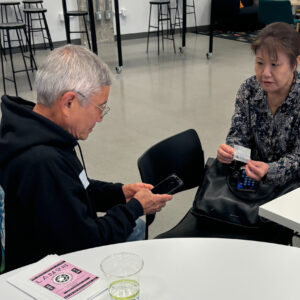
Building new seafood relationships: Commercial Fisherman Dick Ogg and Chef Asuka Uchida of Fish and Bird in Berkley exchange contact info after the Chefs Camp. Photo: Colles Stowell
Fishermen as conservationists
Dick Ogg has been fishing out of Bodega Bay for over four decades. His focus is on ensuring an environmental approach to commercial harvests, ensuring the seafood he and other fishermen harvest comes from healthy populations, is well managed, and largely feeds local communities. As part of that dynamic, he values the importance of direct relationships with chefs and seafood eaters.
“This is a resource that belongs to you. We’re your conduit to that sustainable resource,” he told chefs in the room. The challenge for local fishermen has been balancing what they can do and what they can’t do within regulations aimed at supporting healthy fish stocks and climate shifts that change the fishery. Sometimes those policies are effective, other times those policies push community-based fisherfolk out of business.
“We are typically painted as the people who are damaging the resource. In reality, we are really conservationists,” he said.
One of the challenges fisherfolk face is the complex system of permits used to regulate access to the fishery. Treated much like stocks on Wall Street, these permits are prohibitively expensive, and have been forcing 3rd, 4th, and 5th generation fisherfolk out of business.
“As food costs go up, the price to fishermen goes down,” he said. Folks in the room agreed that has to change, and it becomes part of the calculus for chefs looking at sustainable seafood sourcing.
Expanding knowledge and palates
One option is to introduce new items on the menu and educate consumers about tasty options that are locally available in different seasons.
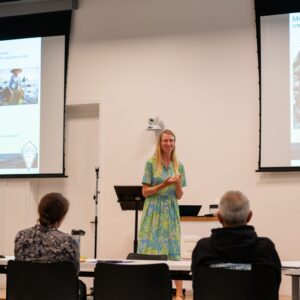
Heidi Herrmann of Strong Arm Farm talks about where her wild harvested Nori and Kombu are sold in stores and restaurants from Sonoma County to Los Angeles. Photo: Gabe Antonio, Slow Food East Bay
Heidi Herrmann of Strong Arm Farm in Santa Rosa described how she invites chefs to come harvest and learn about the Kombu and Nori seaweed variants that have grown along the Sonoma Coast and were harvested by Native Pomo cultures for thousands of years. Getting chefs and folks in the community to learn how to properly cut the seaweed so that it stays healthy and grows properly and teaching them about the meticulous drying process helps them better understand how they can incorporate seaweed on their menus. Working together on the harvest also builds relationships.
She only harvests the seaweed on early mornings in June and July during very low tides along the shoreline. It is then rinsed and dried on screens before being packaged and delivered to stores and restaurants around the Bay Area and as far south as Los Angeles. The health benefits, bright flavor profile, and sustainability story all make a great complement to any seafood menu.
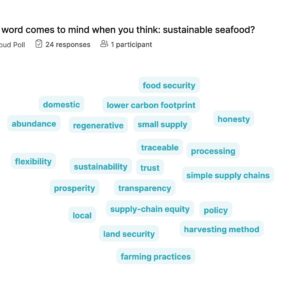
This is how Bay Area chefs envision sustainable seafood.
As we summed up some of the key takeaways from the day’s discussion, Chef Anthony Salguero of Popoca in Oakland shared a sentiment that resonated for everyone in the room. “I just want to learn how to better feed my community,” he said.
All chefs work toward that goal. But his point was specific to sustainable seafood sourcing, and how to find that balance between sourcing responsibly harvested seafood, overall cost, and the need to educate both customers and staff about why it matters.
That equation may vary from chef to chef and restaurant to restaurant, but the fundamental approach is the same: Learn what’s locally available and when, build relationships with local harvesters doing it right, and educate your community about why you and they should care.
We’ll continue to host these Chefs Camps in other communities to bring more chefs and their customers into the conversation. In fact, this conversation will play a key role during Slow Fish 2024: Charleston from Nov. 1-3. Get your tickets here.
Thanks to all of the chefs and seafood harvesters who participated in the conversation! The goal is to continue to spread the message. Big thanks also to Slow Food USA Programs Director Mara Welton and folks from Slow Food East Bay, including chapter lead Willow Blish for helping to make the event a success!
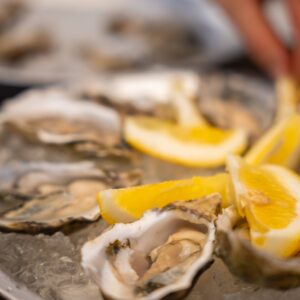
Chefs Camp must have local seafood! Beautiful harvest from Hog Island Oyster Co. Photo: Gabe Antonio
Top photo: Chef/fisherman Christopher Wang of Gypsy Fish Company shares his vision for sustainable seafood at the Slow Fish Chefs Camp in Oakland. Photo: Gabe Antonio, Slow Food East Bay


